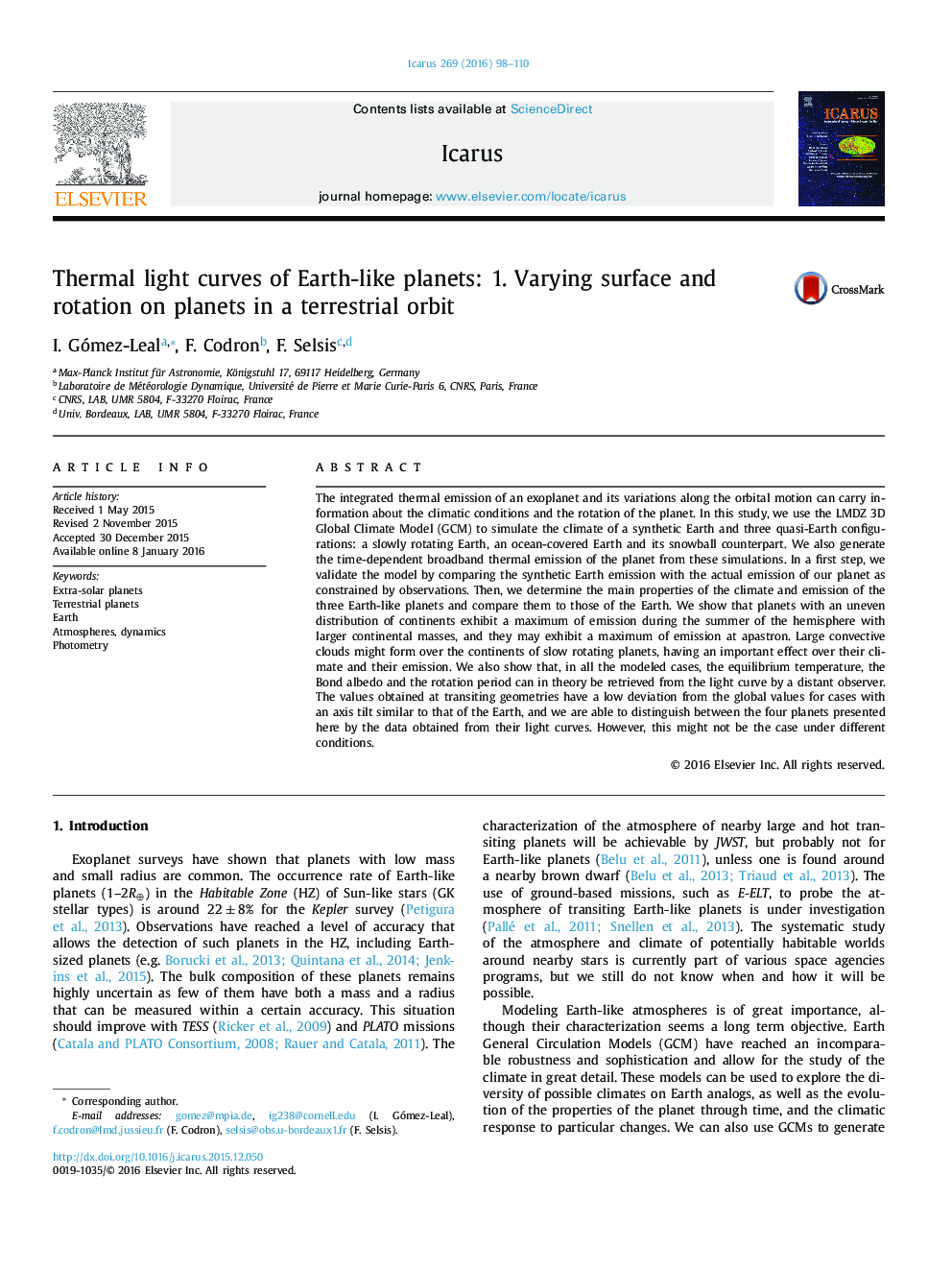| کد مقاله | کد نشریه | سال انتشار | مقاله انگلیسی | نسخه تمام متن |
|---|---|---|---|---|
| 1772968 | 1523521 | 2016 | 13 صفحه PDF | دانلود رایگان |
• A Global Climate Model is used to build light curves of Earth-like planets.
• Moist convection, clouds and sea-ice have a large influence on the climate.
• Slow rotating Earth shows large clouds and colder temperature than previous studies.
• Albedo and rotation period are retrieved for transiting geometries.
• They are even retrieved for homogeneous surfaces and clear-sky conditions.
The integrated thermal emission of an exoplanet and its variations along the orbital motion can carry information about the climatic conditions and the rotation of the planet. In this study, we use the LMDZ 3D Global Climate Model (GCM) to simulate the climate of a synthetic Earth and three quasi-Earth configurations: a slowly rotating Earth, an ocean-covered Earth and its snowball counterpart. We also generate the time-dependent broadband thermal emission of the planet from these simulations. In a first step, we validate the model by comparing the synthetic Earth emission with the actual emission of our planet as constrained by observations. Then, we determine the main properties of the climate and emission of the three Earth-like planets and compare them to those of the Earth. We show that planets with an uneven distribution of continents exhibit a maximum of emission during the summer of the hemisphere with larger continental masses, and they may exhibit a maximum of emission at apastron. Large convective clouds might form over the continents of slow rotating planets, having an important effect over their climate and their emission. We also show that, in all the modeled cases, the equilibrium temperature, the Bond albedo and the rotation period can in theory be retrieved from the light curve by a distant observer. The values obtained at transiting geometries have a low deviation from the global values for cases with an axis tilt similar to that of the Earth, and we are able to distinguish between the four planets presented here by the data obtained from their light curves. However, this might not be the case under different conditions.
Journal: Icarus - Volume 269, 1 May 2016, Pages 98–110
